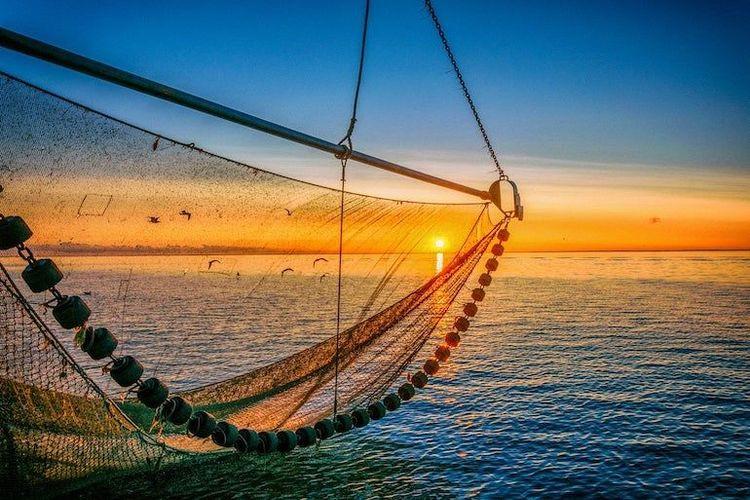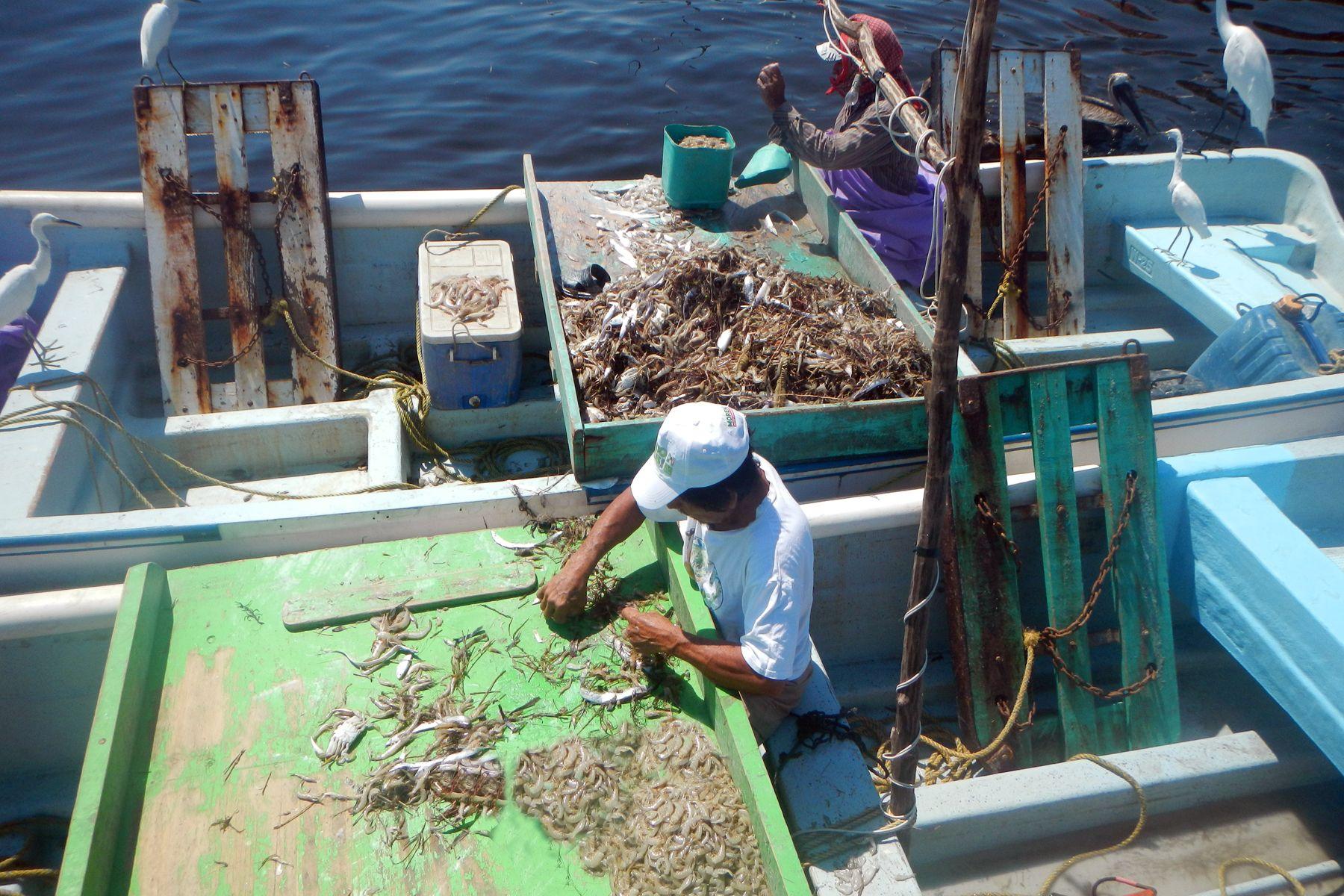The sea turtles caught during the shrimp fishery in Mexico; the silky sharks after catching tuna in Ecuador; the rays carried by Costa Rican ships... In trawling, when nets are thrown to the seabed, they can lift anything in their path.
This phenomenon is known as by-catch. It occurs with species that are trapped in fishing gear and, once on the boat, are returned to the sea, regularly dying or dead.
The volume of wildlife caught and discarded may be 7 million tons per year, according to the World Wildlife Fund (WWF).
This type of catch is one of the main reasons why trawling is considered to represent a risk to the environment. However, since this is one of the most used methods in global production, in the face of those who say that they should be banned, the commitment to sustainable management has emerged.
“When talking about sustainability, what we intend is to be increasingly selective in terms of affecting this type of species as little as possible and not disrupting the ecosystem of the areas where fishing is taking place,” explained Eduardo Benítez, Assistant Program Representative at the United Nations Food and Agriculture Organization (FAO) in Mexico.
In an interview with Journalism Causa Natura, Benítez talks about the Sustainable Management of Incidental Catch in Trawl Fisheries in Latin America and the Caribbean (Rebyc), which so far has had two phases (Rebyc-I and Rebyc-II) and has been implemented in countries such as Mexico, Colombia and Brazil.
The main goal of the Rebyc projects, promoted by FAO, is to achieve a 20% reduction in discard volumes. What it means to bet on making selective a method that is characterized on the contrary.
To achieve this, we work with legal frameworks; training and training of producers; use of technologies to reduce by-catch, and the use of non-target species that have been caught.
“In these years, it has been possible to identify a decrease in unintentional catch of between 20% and 45%... the fishermen themselves are seeing the difference in doing their practices with the new adjustments, obtaining a greater volume and a greater gain in the species of interest...” said the representative of FAO Mexico.
By-catch in Mexico
In Mexico, shrimp fishing is one of the most important. It is estimated that it represents 45% of the value of national fish production and supports around 63,000 fishermen and their families.
The states of Sinaloa and Sonora, in the Upper Gulf of California, are the main producers, but also those that have faced restrictions and embargoes due to the use of fishing gears, such as trawls, to which sea turtles are exposed.
In particular, the Rebyc project has focused on Campeche, another of the producing states where recovering the pink shrimp fishery means investigating sustainability measures.
“In an understandable diagram of how many kilos of bycatch are caught per kilo of shrimp, we see that the area where the ratio is highest is in the area of Campeche and Tabasco, which ranges from one to eight, and the Tabasco offshore area from one to 3.3...”, explained Dr. Armando Wakida, from the National Institute of Fisheries and Aquaculture (Inapesca), during the seminar Sustainable Management of Bycatch in Trawling in Campeche, organized as part of the FAO results in February 2021.
This means that on the coasts of Campeche and Tabasco, for every kilo of shrimp catch, up to eight kilos of bycatch are reached.
Regarding the composition of bycatch, Inapesca integrated that it is made up of up to 321 species, however, 25 of them represent up to 55% of the total by-catch.
“In most cases, bycatch is mainly composed of bony fish, over 70%, and depending on the area, there are mollusks and elasmobranchs, which are mainly made up of rays and sharks,” said Dr. Wakida.
For the Rebyc-I project, launched from 2002 to 2008, the main approach to making trawling more selective was the use of technologies, mainly in relation to fishing gear. While for RebyC-II, from 2015 to 2020, issues of legislation and awareness-raising among fishermen were explored in depth.
“Both projects have been within the framework of the environment and very important information has been produced in terms of capacity building, how to assist fishermen with catching and, above all, how to influence the reduction of this type of species from by-catch,” said Eduardo Benítez, from FAO in Mexico.
As part of the use of technologies, the change in the designs of trawls stands out. The novelty is the inclusion of fish exclusion devices such as the fish eye and double wing, as well as sea turtles.
For monitoring, electronic equipment is also used to measure fuel flow, network opening and cable tension, among other parameters.
However, these technologies don't eliminate bycatch. Therefore, to reduce the waste of species that are discarded and returned to the sea, work has been done on alternatives for their use, such as the development of food products such as fillets, sausages, silage and flours.

Although there are medium-water trawls, efforts are concentrated on bottom trawls because of their greater environmental impact. Photo: Government of Mexico
Obstacles and slopes
In addition to the Rebyc projects, on the international scene, environmental organizations, fishing communities and various sectors involved have promoted measures that seek to curb damage to marine ecosystems.
Actions include isolating the trawl footprint, known as freezing, establishing prohibited areas, or limiting fishing times and periods.
“The environmental impact that trawling has had is that it's a very petty fishery. It destroys many ecosystems irreversibly in a few minutes. Maybe shrimp still exist, but what about other species... if you take an ecosystem approach, you see that not only is one resource being damaged, but the effects it has on others...”, said Liesbeth van der Meer, executive director of Oceana Chile.
For the organization, trawling is not an option that can become an environmentally friendly practice. Therefore, the freezing of the trawl area is proposed to work on the recovery of ecosystems. Considering that the recovery period can begin between 10 and 30 years after stopping the capture.
“The other way would be to prohibit fishing gear for bottom trawling, gradually and under certain resources. There are other arts that can do the job, such as spinel, which is more selective and would stop dragging funds,” van der Meer said in an interview.
For their part, Rebyc-I and Rebyc-II face their own obstacles. Despite the participation of Inapesca, the Colegio de La Frontera Sur or the Center for Technological Studies of the Sea of Campeche, it is still necessary that the tools and mechanisms of these projects continue even after their term ends.
“It is complex to take advantage of good practices and experiences so that once the original source of funding ends, they can continue to be implemented... Fortunately, there are well-identified organizations in the sector that allow better coverage and for information on these projects to be transferred as quickly as possible to producers and decision makers...”, acknowledged Eduardo Benítez.
Meanwhile, FAO announced that a sustainability project will begin on the subject by the end of this year for the Marine Protected Areas of Mexico.



Comentarios (0)